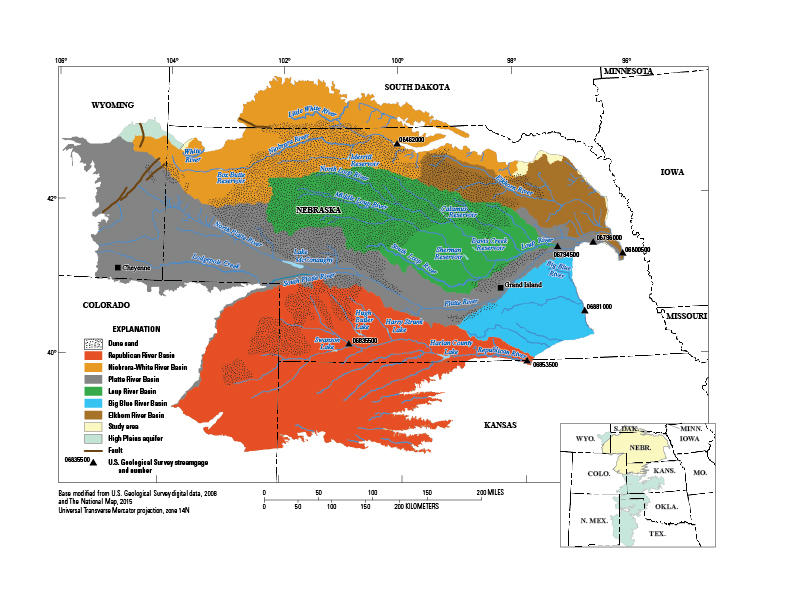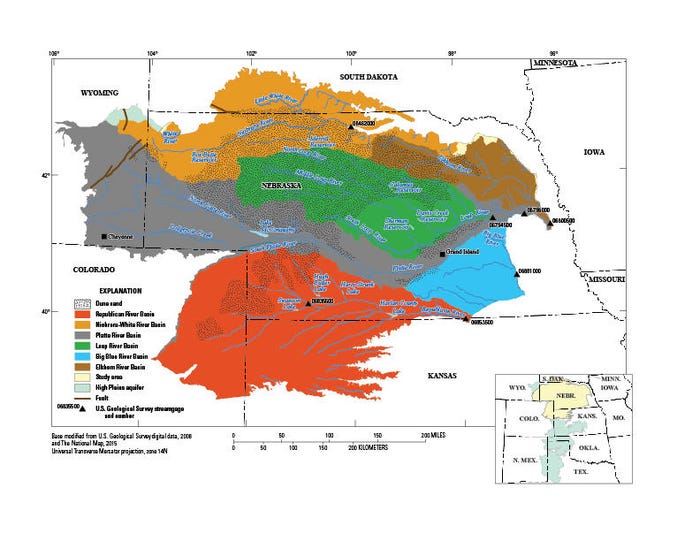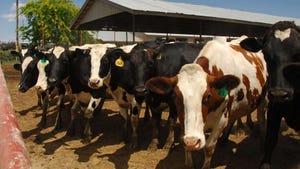New model helps assess groundwater flow in northern Plains
USGS releases first tool since 1980s assessing water availability in northern High Plains aquifer.
December 14, 2016

A new U.S. Geological Survey (USGS) publication and model can be applied by multiple entities to better understand flow, quantity, sources and sinks of groundwater in the Northern High Plains Aquifer, which covers approximately 100,000 sq. miles across Nebraska, South Dakota, Kansas, Colorado and Wyoming.

Public domain.
“An assessment like this has not been done since the USGS High Plains Regional Aquifer-System Analysis (RASA) study was completed in the 1980s, so this effort represents a substantial update of the technology and science beyond what was available during that time,” said USGS scientist Steve Peterson, lead author of the study. “Plus, there were considerable more data available to use for the analysis, and the system has changed and undergone more development since that time.”
Several potential uses for the new USGS tool include understanding the current system and how it has changed since pre-development; applying it as a framework for future, more localized groundwater models and studies, and creating future forecasts of water resources under various potential future conditions.
Although the model doesn’t forecast, it does provide a tool based on historic measurements. The final report will be an assessment of groundwater availability applying this new groundwater model as a tool to do future forecasting and other related tasks.
“Estimated groundwater withdrawals for irrigation used in the model increased through the historic period for which the model was calibrated, being a little over 1,400 cu. ft. per second on average from 1940 to 1949 to being almost 10,300 cu. ft. per second on average from 2000 to 2009,” Peterson said. “Even though the 2000-09 period had some pretty significant drought years, that's still a very large increase.”
This new USGS report is one in a series produced by the High Plains Groundwater Availability Study.
You May Also Like

.png?width=300&auto=webp&quality=80&disable=upscale)

